Working with circuits means you are always in need of ‘power’. A lot of circuits work with battery operated power. It is not dangerous and if the battery ‘dies’ on you, you just buy a new one. But for a lot of reasons (environmental, money, more power) it’s a better choice to make use of power-supplies.
A power-supply takes its energy from the wall-socket (in Europe 230V AC/50Hz / USA and Japan 110VAC/60Hz) and converts this into low voltage DC. So before we have a power-supply that provides us with (let’s say) +9VDC, there are some important steps to take.
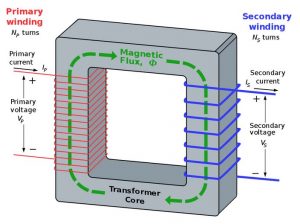
Transform
The first thing is to transform the 230V~ (Europe) down to (for example) 12V~. This is done by a transformer. A transformer is in its fundamental a piece of metal with two coils wound around it. See the picture (thanks Wiki). The red wire is the primary winding and the blue wire is the secondary winding.
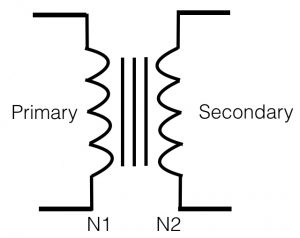 The red wire is connected to the mains (230V~) and is inducing a magnetic Flux within the metal core (green dotted line). In the blue wire, wound around the same metal core, an electric current will flow (induced) because of this magnetic flux. If the amount of windings on the primary side (N1) is equal to the amount of windings of the secondary side (N2), the voltage on the input and output are equal. But let’s say the primary coil has 1000 windings and the secondary coil has 100 windings, the output voltage (the secondary voltage) will be 23V~ (230 * 1/10). So the proportion of the primary and secondary windings ( N1/N2) determine to which value the voltage is transformed. In practise there are values that vary from 6V~, 9V~, 12V~, 15V~, 18V~, 24V~, … Note that the output (~) is still an AC signal. It has a smaller amplitude but it still has the same frequency (50Hz).
The red wire is connected to the mains (230V~) and is inducing a magnetic Flux within the metal core (green dotted line). In the blue wire, wound around the same metal core, an electric current will flow (induced) because of this magnetic flux. If the amount of windings on the primary side (N1) is equal to the amount of windings of the secondary side (N2), the voltage on the input and output are equal. But let’s say the primary coil has 1000 windings and the secondary coil has 100 windings, the output voltage (the secondary voltage) will be 23V~ (230 * 1/10). So the proportion of the primary and secondary windings ( N1/N2) determine to which value the voltage is transformed. In practise there are values that vary from 6V~, 9V~, 12V~, 15V~, 18V~, 24V~, … Note that the output (~) is still an AC signal. It has a smaller amplitude but it still has the same frequency (50Hz).
Important notice is that a transformer only works for AC! Since the coil is just a long wire, it’s resistance is low and when a DC-voltage is applied, the current will be too high (coil can burn). For AC signals a coil acts as a resistor, so for AC the current will be low(er).
The other reason why only alternating signals works for a transformer, is that we need alternating current to create a constant changing magnetic field (flux). Due to this changing magnetic filed, a current will be induced in the secondary coil.
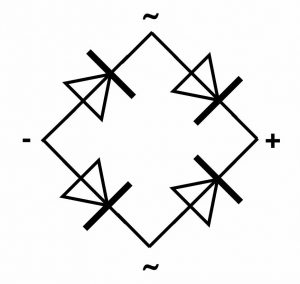
Rectify
The next step in the design of a power-supply is to ‘rectify’ this low secondary AC-output of the transformer and change it into a DC-signal. This is a achieved with the use of 4 diodes actually placed into a bridge-circuit, also called Greatz circuit. These 4 diodes connected to an AC-signal will double rectify the AC-signal. If a big capacitor is placed parallel to the output of the diode-bridge, the rectified output will be smoothed and the ‘gaps’ between will be filled. See the figure below.
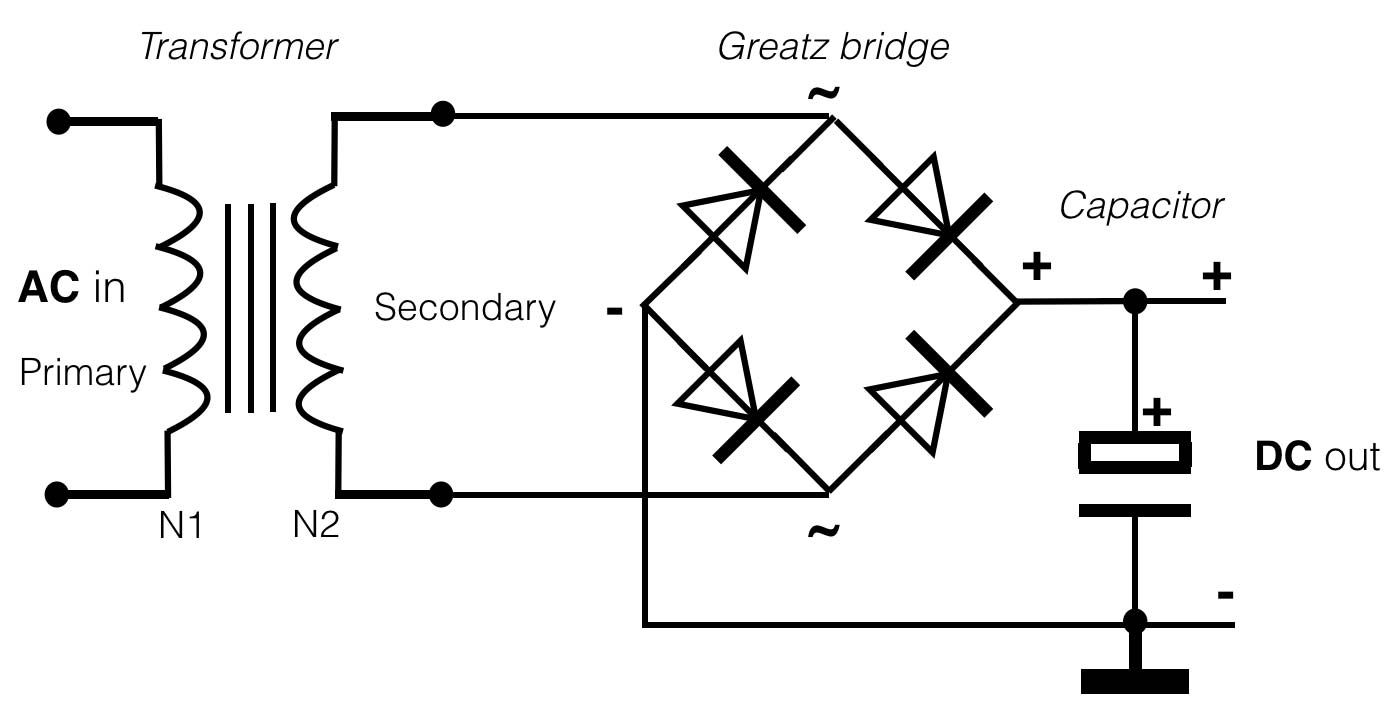
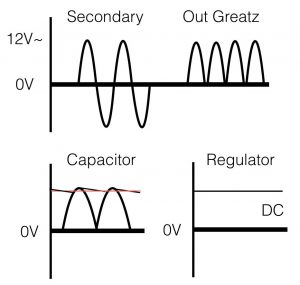
Regulate
The setup above shows the very standard power-supply setup. The DC output of this setup still has some ‘ripple’ on top of the DC signal (see the ‘capacitor’ part of the graph). To make a ‘perfect’ straight DC output, we make use of so called regulators.
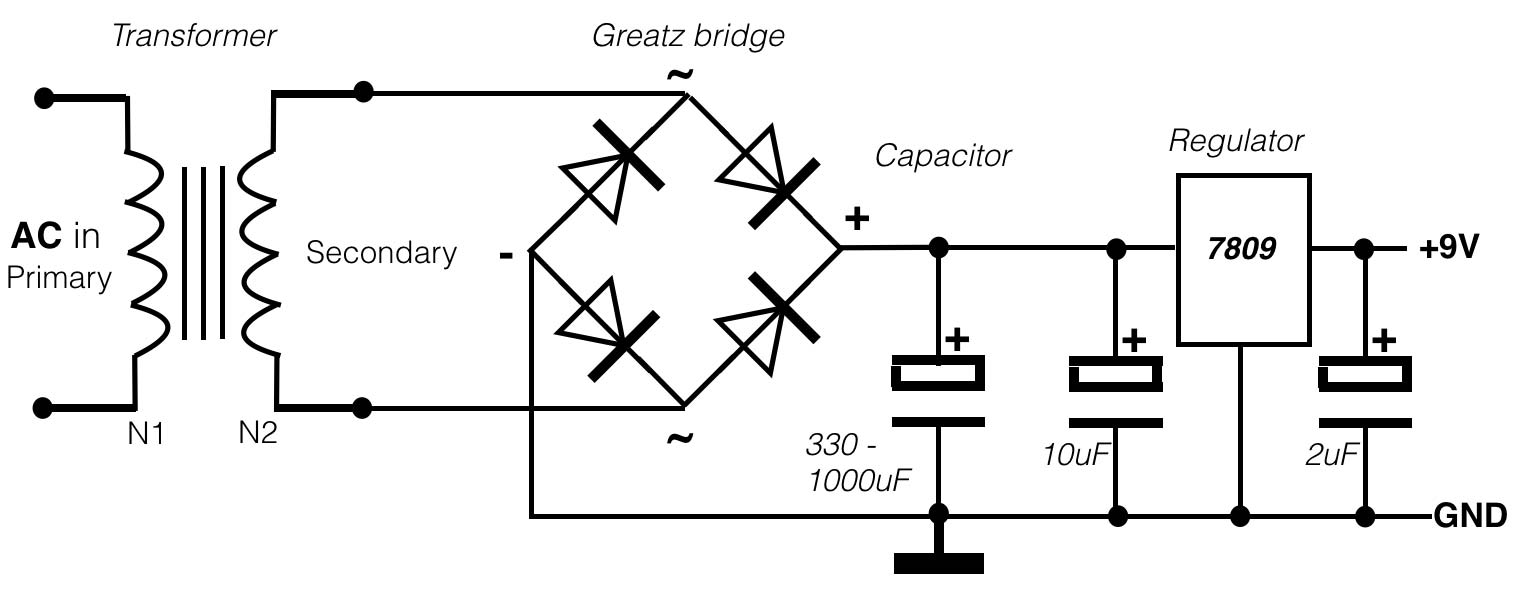
Regulators, like the ‘7809’ in the example above, do come in all kind of forms or shapes. The 78XX series are positive regulators and the number (XX) determines the value of the voltage they will regulate. Of course this is only possible if the voltage in the input is higher than the regulated output. In general the difference between the in- and the output should be at least 2,5V. The capacitors used on the in- and output of the regulator are here to avoid oscillation and they are placed as near the regulator as possible. The power supply with only +9V output is also called a ‘unbalanced’ power supply. It is only one value.
If you want to work with audio circuits you most likely need a balanced power supply. This is a supply that provides you with both plus and minus values. An example below:
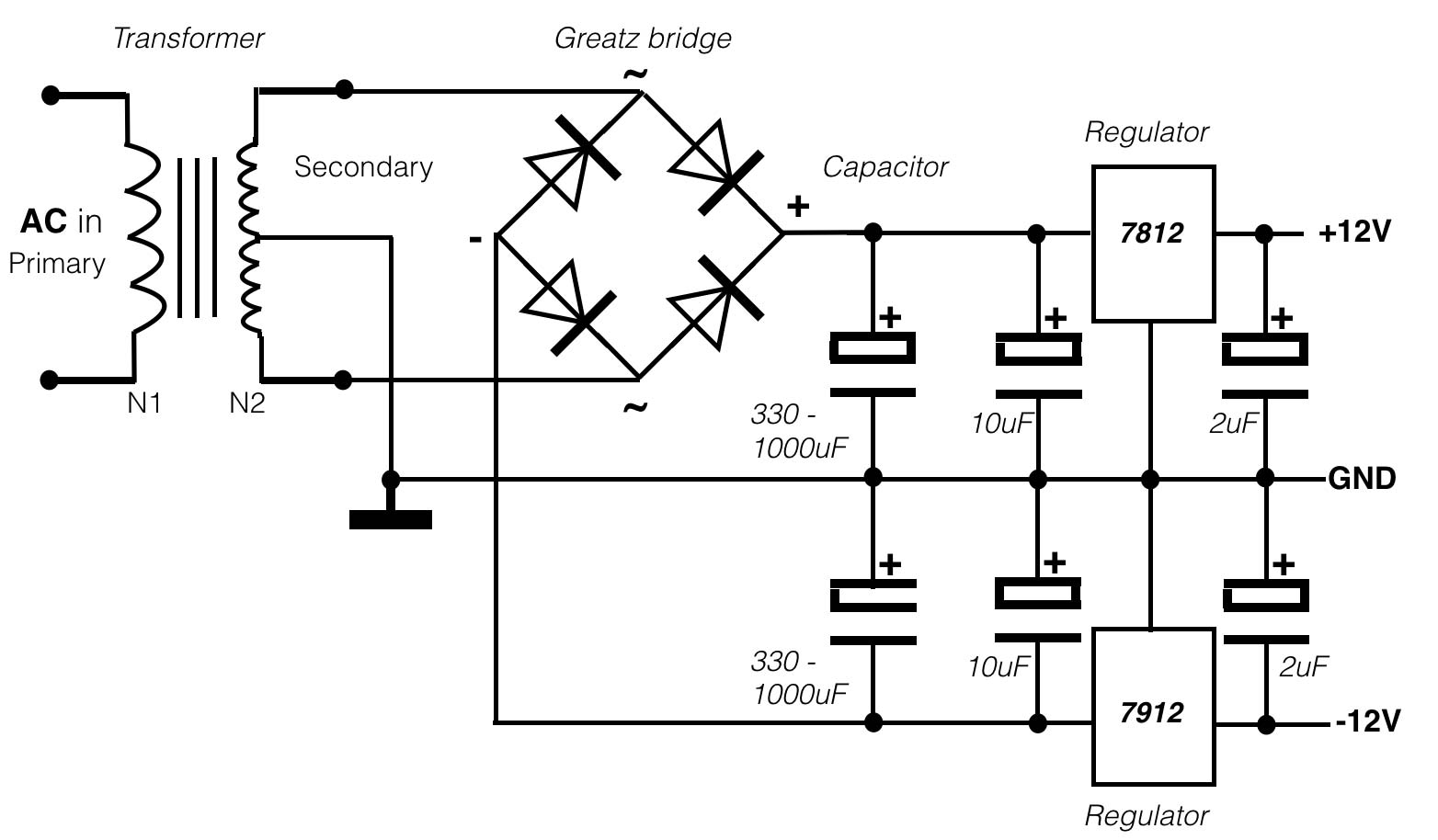
This is called a balanced power-supply. It provides your circuit with (in this example) +12V, -12V and GND. This is exactly what you need to power opamps or other audio related circuits. The difference between the two set-ups (balanced vs unbalanced) starts already with the transformer itself. This transformer has two coils on the output, placed in series. The middle point of these coils is connected to ground – so in fact we have two identical 12V~ AC signals to connect to the diode-bridge (Greatz). The 79XX regulator series are specially designed for the negative voltage.
The value of the buffer-capacitor is very much depended of the amount of current the power supply has to provide. There is a ‘rule of thump’ states, for every 1A (=1000mA) you need at least 1000uF. The circuits above with the applied voltage regulators 78xx series and the 79xx series are capable of delivering a maximum current of 1000mA if the devices are placed on a heat-sink. An heat-sink avoids the regulator to become to hot!
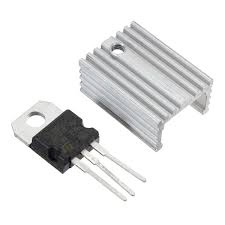
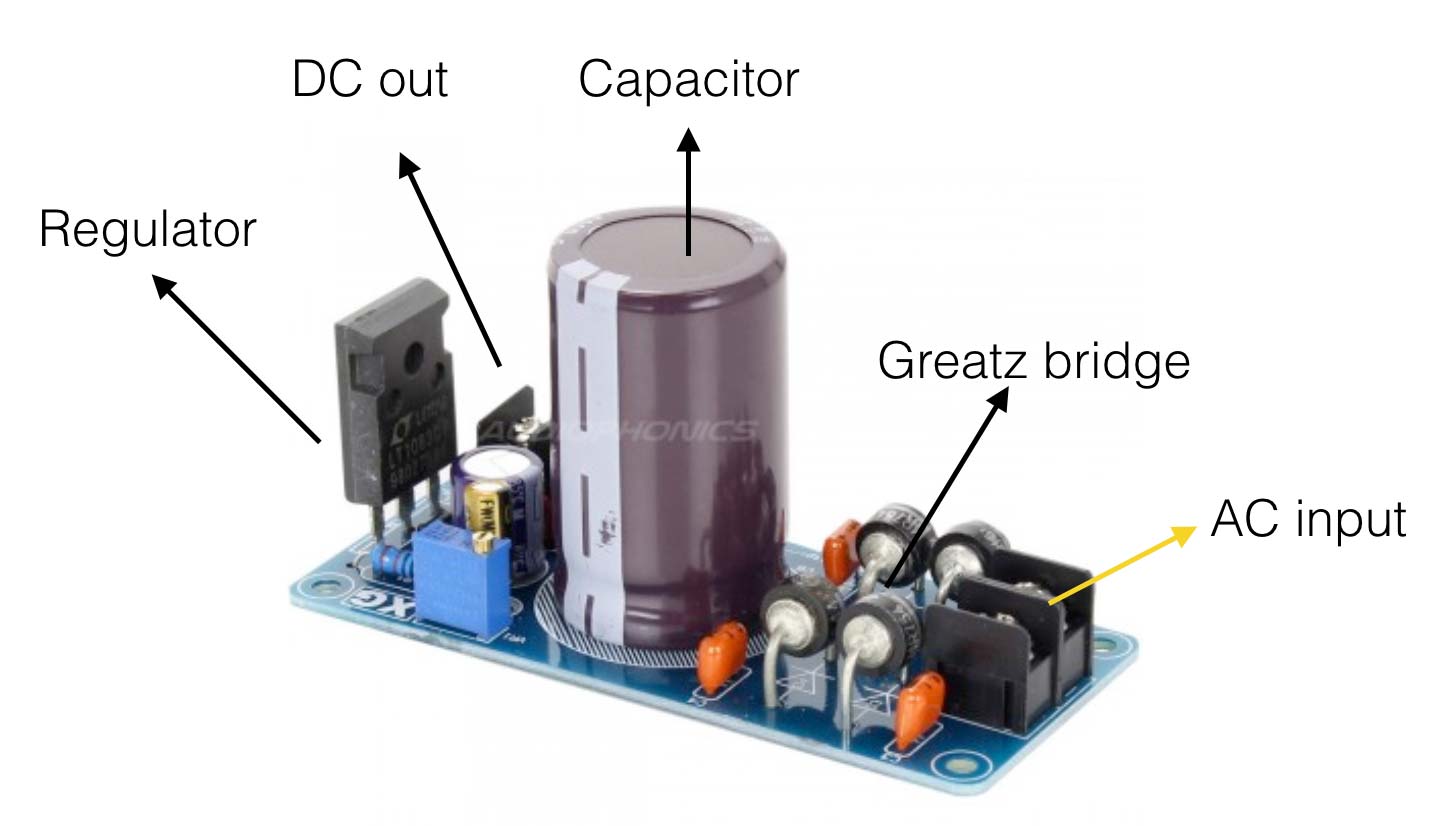
Regulator and heat-sink (left) and an example of a small PCB (Printed Circuit board) holding a power-supply setup.
